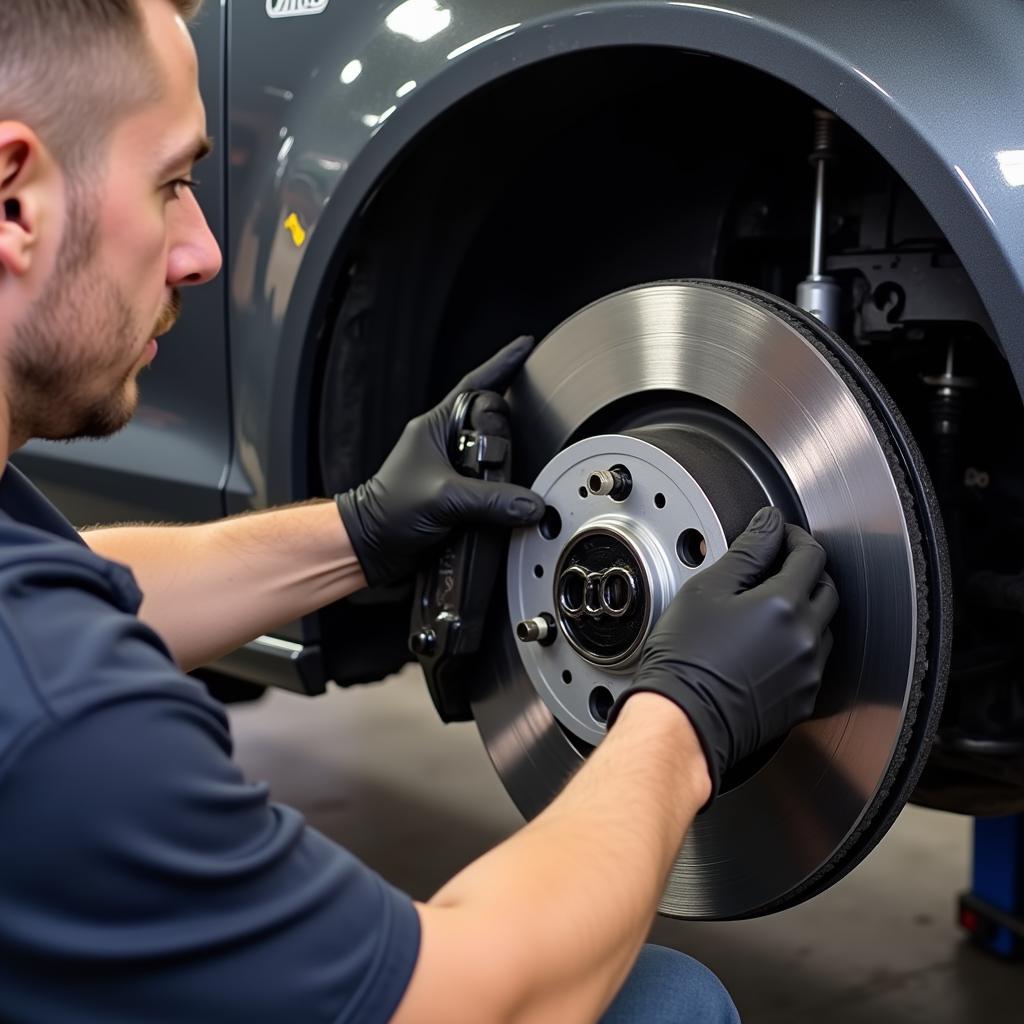The brake system warning light is one of the most important indicators on your car’s dashboard. It’s crucial to understand what it means and where to find it, as it signals potential issues with your braking system that shouldn’t be ignored. This article will guide you to the brake system warning light location in your car and explain the different scenarios it might be indicating.
Deciphering the Brake Warning Light
Your car’s brake warning light, often depicted as a circle with parentheses on either side and an exclamation mark in the center, or the word “BRAKE,” illuminates for various reasons. While its primary function is to alert you about a potential malfunction within the braking system, it can also indicate other issues.
Common Reasons for the Brake Warning Light
-
Engaged Parking Brake: This is the most frequent reason for the light. Before panicking, ensure your parking brake is fully disengaged.
-
Low Brake Fluid Level: A drop in brake fluid signifies a leak in the system, which needs immediate attention.
-
Brake System Malfunction: This could point to an issue with your ABS system, brake lines, calipers, or other brake components.
-
Worn Brake Pads: Most modern cars have sensors that trigger the warning light when your brake pads wear down to a certain level.
Locating the Brake Warning Light
The brake system warning light is typically located on your dashboard, within your direct line of sight while driving.
Standard Location
In most vehicles, you can find it within the instrument cluster, often near the speedometer or tachometer.
Variations in Location
While the standard location is common, some manufacturers may place the light in slightly different areas on the dashboard. Always consult your car’s owner manual for the precise location of the brake system warning light if you’re unsure.
What to Do When the Light Turns On
If your brake system warning light illuminates, it’s crucial to react promptly and safely:
-
Pull Over Safely: Find a safe location to pull over and assess the situation.
-
Check Your Parking Brake: Ensure your parking brake is fully released.
-
Inspect Brake Fluid Level: If you’re comfortable, carefully check your brake fluid reservoir. Caution: Brake fluid is corrosive.
-
Call a Mechanic: If the light persists, do not continue driving. Contact a qualified mechanic, like the experts at Car Diag Tech, to diagnose and repair the issue.
where brake system warning light location in the car
Importance of Timely Action
“Ignoring the brake warning light is like playing Russian roulette with your safety,” says veteran mechanic John Smith, owner of Smith’s Auto Repair. “Even a slight delay in addressing the issue can have severe consequences.”
The brake system is critical to your safety on the road. Addressing any warning signs immediately ensures your car remains safe to drive and prevents potentially dangerous situations.
Preventing Future Issues
Regular car maintenance, including brake inspections, is key to preventing brake system issues.
“Just like you wouldn’t ignore a fever, don’t ignore your car’s warning lights,” advises Sarah Jones, lead technician at City Center Auto. “Routine maintenance can prevent small issues from escalating into costly repairs and keeps your car running smoothly.”
Conclusion
The brake system warning light is a vital safety feature in your car. Understanding its location, the reasons it might turn on, and the appropriate actions to take can help you avoid dangerous situations. Remember, if the light illuminates, it’s crucial to react promptly and seek professional help if needed. Don’t compromise on your safety – a well-maintained car is a safe car.

